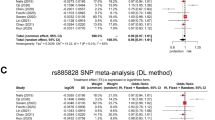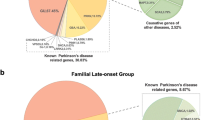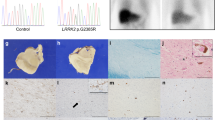Abstract
Progressive supranuclear palsy (PSP) is a rare neurodegenerative disease which shows several psychiatric and neurologic symptoms: pseudobulbar palsy, supranuclear ocular palsy, extrapyramidal rigidity, gait ataxia, and dementia.1 Almost all cases seem to be sporadic; therefore, the elucidation of risk factors is important to clarify the pathological mechanism. Apolipoprotein E4 (ApoE4) is now well established as a risk factor of Alzheimer's disease (AD). Here we report the ApoE allele frequency in PSP, which shares pathological findings such as neurofibrillary tangle (NFT) with AD. NFT is an important sign for the derangement of normal cytoskeletons in degenerating neurons. Although there was no significant increase in ε4 allele frequency in the present series of PSP cases compared with that in the Japanese controls, there was a significant increase in the ε2 allele frequency in PSP compared to controls.
This is a preview of subscription content, access via your institution
Access options
Subscribe to this journal
Receive 12 print issues and online access
$259.00 per year
only $21.58 per issue
Buy this article
- Purchase on Springer Link
- Instant access to full article PDF
Prices may be subject to local taxes which are calculated during checkout
Similar content being viewed by others
Author information
Authors and Affiliations
Rights and permissions
About this article
Cite this article
Sawa, A., Amano, N., Yamada, N. et al. Apolipoprotein E in progressive supranuclear palsy in Japan. Mol Psychiatry 2, 341–342 (1997). https://doi.org/10.1038/sj.mp.4000285
Received:
Revised:
Accepted:
Issue Date:
DOI: https://doi.org/10.1038/sj.mp.4000285
Keywords
This article is cited by
-
Identification of metabolic pathways and key genes associated with atypical parkinsonism using a systems biology approach
Metabolic Brain Disease (2024)



